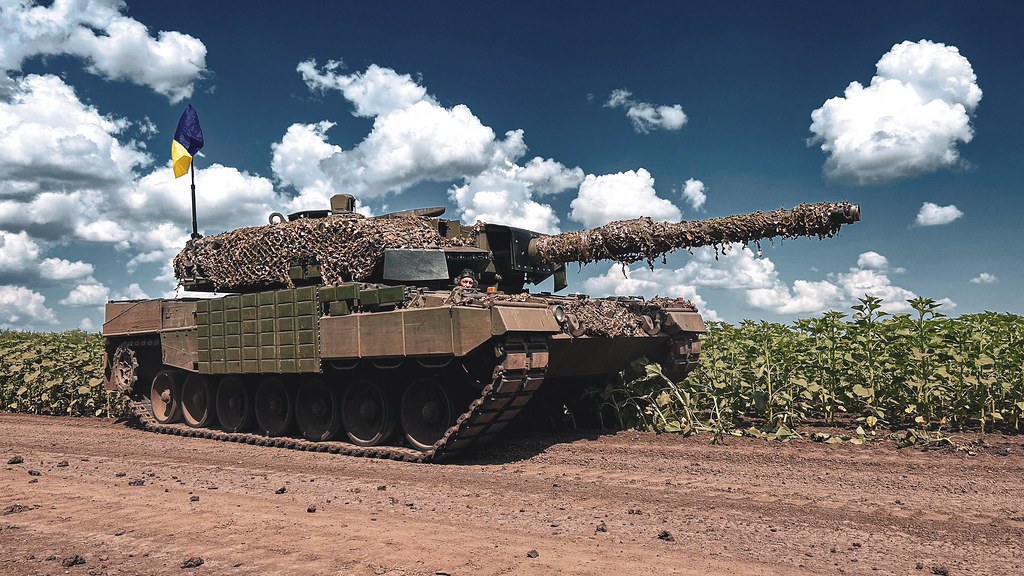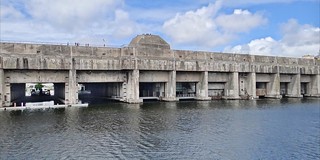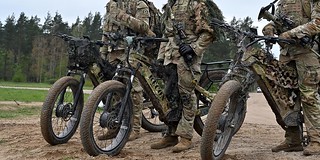The modifications that the Ukrainian Army is applying to its Leopard 2A4 tanks
The arrival of modern tanks donated by Western countries has been a considerable help to the Ukrainian resistance.
From the more than 700 tanks donated by other countries, mostly old models from the Soviet era, Ukraine has received a total of 71 Leopard 2 of various types, a model manufactured in Germany and which is having its second experience in combat after the poor role he had in the ranks of the Turkish Army in Syria. So far, only 6 Leopard 2 Ukrainians have been destroyed. In addition, another 10 have suffered damage, with the possibility of repairing it. In the midst of the Ukrainian counteroffensive, these figures speak highly of the Leopard 2 and explain why it is the Western tank with the most sales to date.

The best figure that summarizes the performance of this tank is that so far Ukrainian Leopard 2 tankers have not suffered any fatal casualties, which indicates the high degree of survivability offered by these armored vehicles, especially in comparison with Russian tanks. This proves the success of the high level of protection enjoyed by the crew of the Leopard 2, although this characteristic implies a larger and heavier tank than Russian tanks.

It must be said that except for the aforementioned Turkish experience, the Leopard 2 had not had as much combat experience as the American M1 Abrams or the British Challenger, which implies that the modifications that the manufacturer are the result, mainly, of the experience acquired with other models. In every war, armies and soldiers themselves make additions to their tanks as they gain experience in combat with them, something that was already seen very frequently in World War II and also in subsequent wars .
Among specialists and fans of military matters, there was great curiosity about how Ukraine would implement improvements to its Leopard 2, since the Ukrainian Army already has experience in improving its armored vehicles, for example, adding reactive armor plates (ERA). A video published yesterday shows a Ukrainian Leopard 2 battalion with some modifications:
🇺🇦Ukrainian Leopard 2A4 with ERA installed 😍#UkraineRussiaWar #Ukraine #War#Germany #UkraineWar #ЗСУ pic.twitter.com/RHlOu70tHZ
— AlexRaptor (@AlexRaptor94) September 1, 2023
In addition to the camouflage nets, which in addition to camouflage also help to reduce the infrared and radar signature of the tank, the most notable thing about these tanks are the ERA block panels that have been added to both sides of the turret and the barge.
But the reactive armor plates are not the only modifications that have been made to these tanks, as we can see in this video capture, in which added protections can be seen on the front of the tank. the turret.
The ones we see in this image are Leopard 2A4 from the 33ª Separate Mechanized Brigade, formed in 2016 and whose Tank Battalion includes many of the Leopard 2s received by Ukraine. In mid-August this unit published this photo of one of their Leopard 2A4, still unmodified.

However, on July 15, the General Staff of the Ukrainian Army published a series of photos in which we already had the opportunity to see some of the modifications that the 33rd Mechanized Brigade is applying to its Leopard 2A4.

These photos showed the straight armor blocks, of the Kontakt-1 type, on both sides of the barge, glued to the tank skirts. According to Tankograd, these blocks consist of two elements 4S20 explosives, formed by PVV-5A plastic explosive sandwiched between two flat steel plates.

This reactive armor is of Soviet origin and has been used for many years in various models of T-72 tanks. For those who do not know what reactive armor is, the function of these plates is to mitigate the impact of a projectile against a tank, detonating an explosion towards the outside of the vehicle, which reduces the damage caused by the impact.

In these photos we can also see what has been added to the front of the turret. On the one hand, a rubber protection has been added to the tilting support of the gun. Two thick rubber skirts have also been added to the bottom of the front faces of the tower, a measure that is not new in countries that have operated Russian tanks: the T -80BV also have that accessory. The function of this rubber skirt is, surely, to deflect projectiles aimed at the base of the turret, one of the most vulnerable parts of the tank. A solution designed against light anti-tank weapons.

As we see in these enlargements of the last two photos, a row of reactive armor plates has been added to those rubber skirts. The tank that we see in the following photo has the support already installed but not the plates. In the photo above these lines, we do see the tank installed.

On July 16, the 30th Brigade published this other photo< /a> in which we can see the reactive armor plates.

In this enlargement of the photo we see a panel with 42 ERA Kontakt-1 plates located on the right apron of the tank, a very important position not only to protect the vehicle's running chain, but also the base of the turret. We also see another 5 Kontakt-1 plates on the apron, on the right, in order to better cover the driver's position and the base of the turret.

This enlargement of the photo shows the protection of the front right side of the turret. We observe the same rubber skirt as on the left side, but in this case the entire row of reactive armor plates cannot be placed due to the EMES 15 scope, embedded in the turret, to the right of the gun.

This image also reveals the installation of reactive armor behind the rubber skirt, in a position very similar to those of the T-80BV. In other words: the Ukrainian Army has "Sovietized" the protection of the Leopard 2A4. We will see the result that these modifications give.
|
Don't miss the news and content that interest you. Receive the free daily newsletter in your email: |
- Most read
- Eurofighter vs F-35: the opinions of professional pilots on these advanced fighters
- The firearms used by the Pontifical Swiss Guard, the smallest army in the world
- Sierra Army Depot, a huge United States base with hundreds of Abrams tanks stored
- The United States Army shows its electric bicycles for reconnaissance missions
- The icy deployment of the Spanish EF-18 and A400M planes under the snow in Lithuania
- The brutal 'touch and go' of a Lufthansa Boeing 747 at Los Angeles Airport
- Ye Olde Pub: The American B-17 bomber saved by a German Bf-109 fighter pilot

 ES
ES









Opina sobre esta entrada: